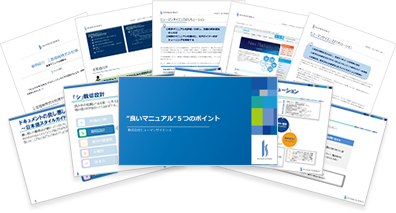
Hello! I am K, a consultant. I usually handle manual creation and improvement projects for companies in the manufacturing and pharmaceutical industries.
This time, I will write a blog about "knowledge sharing," which has become a common topic lately. From the perspective of a manual production company, I would like to introduce specific methods of sharing and the benefits of engaging in manual creation as part of knowledge sharing.
- Table of Contents
1. Why is knowledge sharing necessary?

Knowledge sharing is the process of sharing the experiences and knowledge that individual employees possess as assets throughout the organization. Why should we focus on this initiative?
In today's business environment, labor shortages have become a serious issue. Therefore, we must increase productivity with a limited number of members. However, many companies seem to be struggling with situations like the following.
・Repeating the same mistakes: Multiple members make the same mistakes
・Burden of training new employees: New employees struggle to become independent, requiring constant attention from seniors, which hinders the seniors' work
・Responding to inquiries: There are many inquiries from other departments every day, and time is spent answering them
To overcome situations like the one mentioned above and enhance productivity, initiatives such as "eliminating task dependency," "streamlining training for new employees," and "reducing internal inquiries" are necessary. The key to successfully implementing these initiatives lies in knowledge sharing. If knowledge is shared, the concerns mentioned earlier can be resolved as follows.
• Prevention of mistakes: By sharing examples of mistakes among members, we can notice issues before they occur.
• Streamlining training for new employees: If manuals for new employees are well-organized, they will only ask seniors questions when they cannot understand the manual, thereby reducing the burden on seniors.
• Reduction of inquiries: By organizing manuals and FAQs, inquiries will decrease, and the time spent on responses will be reduced.
By sharing individual knowledge and converting it into organizational knowledge, we can bring various benefits such as improving operational efficiency, promoting innovation, fostering employee growth, and strengthening organizational capabilities, thereby enhancing productivity. Knowledge sharing is an essential initiative in today's business environment and a crucial element for enhancing a company's competitiveness.
2. Tacit Knowledge, Explicit Knowledge, and the SECI Model

Before introducing methods for knowledge sharing, I would like to touch on the essential concepts of "tacit knowledge" and "explicit knowledge," as well as the "SECI model" when discussing knowledge sharing.
According to Dr. Ikujiro Nonaka, a Japanese management scholar, organizational knowledge consists of "tacit knowledge" and "explicit knowledge."
・Tacit Knowledge: Knowledge that is difficult to express, based on individual behavior, values, intuition, etc. (e.g., skills possessed by a skilled craftsman or intuition based on experience)
・Explicit Knowledge: Knowledge that is represented in forms such as words and diagrams, and can be understood objectively (e.g., manuals, procedures, information recorded in databases, etc.)
By converting and sharing tacit knowledge into explicit knowledge, individual knowledge becomes organizational knowledge, and the entire organization evolves intellectually.
The conversion from tacit knowledge to explicit knowledge is based on the framework known as the "SECI model."
The SECI model consists of four phases: "Socialization," "Externalization," "Combination," and "Internalization." It is said that by following these phases to transform tacit knowledge into explicit knowledge, higher-level and new knowledge can be created.
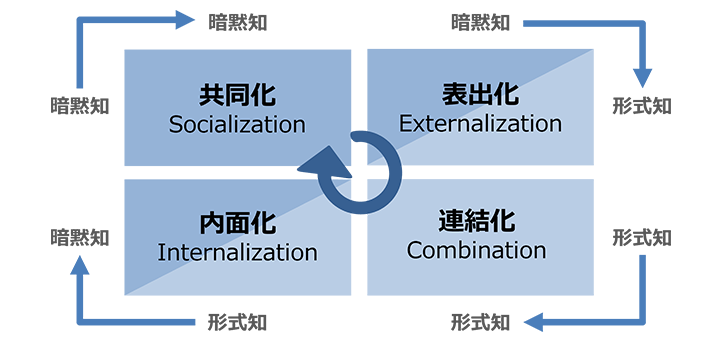
The specialty of human science is "expression," but in order to understand its positioning, I will first explain the entire model.
1. Socialization: Conversion of individual "tacit knowledge" to organizational "tacit knowledge"
This is the phase where an individual's tacit knowledge is shared with others by sharing experiences and sensations. For example, knowledge sharing through direct communication and experiences, such as "a disciple learns by observing the work of a craftsman," falls into this category.
2. Externalization: Conversion from Tacit Knowledge to Explicit Knowledge
This is the phase where an individual's tacit knowledge is objectively verbalized and quantified through dialogue, words, charts, and other means. For example, activities that compile experience-based knowledge into procedures and manuals fall under this category.
3. Combination: Conversion from existing "explicit knowledge" to new "explicit knowledge"
This is the phase of creating new knowledge by combining or reorganizing existing explicit knowledge. For example, sharing a manual created by someone with team members and having them add tips would fall under this category.
4. Internalization: Conversion from "Explicit Knowledge" to "Tacit Knowledge"
This is the phase where explicit knowledge is incorporated as one's own tacit knowledge through practice and experience. For example, reading manuals and documents and applying them in practical work corresponds to acquiring new insights and knowledge.
By advancing the conversion of knowledge according to the SECI model, individual knowledge can be transformed into organizational knowledge. As mentioned at the beginning, if knowledge is shared within the organization, it brings various benefits and leads to increased productivity.
This time, from the perspective of a manual production company, I would like to focus on the phase of the SECI model known as "Externalization" and introduce specific methods.
3. Specific Methods for Knowledge Sharing (Expression Phase)

Now, I will introduce the methods of expression, specifically the concrete ways to share knowledge in an objective and visible form.
- Holding regular meetings and study sessions
By creating a meeting to verbalize the knowledge and information held by team members, we can share knowledge.
This not only allows us to obtain the latest information in real-time but also enhances the sense of unity among team members through communication. However, it is necessary for members to participate with a common sense of purpose to avoid the meeting turning into casual chatter.
Specific Examples
Weekly Meeting: In the regular weekly meeting, each member shares what they have recently learned and the progress of their projects.<br/>Study Session: Members with expertise act as instructors and give presentations on specific topics.
・Building knowledge bases such as internal wikis and FAQs
By documenting the knowledge and information held by team members and centralizing it in an accessible location for other members, knowledge can be shared.
This allows for quick searching and referencing of information, enabling efficient acquisition of knowledge.
*However, regular maintenance is necessary as outdated information can lead to the sharing of incorrect information.
Specific Examples
Internal Wiki: Create a page summarizing project progress and technical know-how, making it accessible to everyone.
FAQ: Create a page compiling frequently asked questions and their answers, allowing new employees and project members to quickly obtain information.
- Creation of Manuals
By documenting the work procedures and know-how that some members have in their minds, we can share knowledge.
Having a manual ensures that even if different people perform the same tasks, a certain level of quality can be maintained. Additionally, by creating manuals for new members, we can shorten the onboarding period.
*However, like a knowledge base, regular maintenance is necessary. In particular, when work procedures or the systems used in business change, the manuals must also be updated accordingly.
Specific Examples
Operation Manual: Create a document that details how to use software or systems, making it accessible for everyone to refer to.
Process Manual: Create a document that explains business processes and procedures step by step, to be used for training new employees.
In the next chapter, we will focus specifically on manual creation and explain the key points for creating effective manuals for knowledge sharing.
4. Key Points for Creating Manuals for Knowledge Sharing

Manuals for knowledge sharing are created to share the know-how in your head with others. Therefore, it is meaningless to create something that is "not understandable even after reading" or "not motivating to read."
To create manuals that can be used effectively, there are several key points to keep in mind. Here, we will introduce three representative ones.
- Clarify the purpose and target of the manual
Please open the manual that you often use. Does that manual specify when and for what purpose it is used (objective) and who it is intended for (target audience)?
If the purpose and target are unclear, readers may wonder, "When should I use this manual?" or "Is the information I need written here?" Especially during busy times, it is essential to quickly find the necessary information, but it can happen that "I read through it, but in the end, I couldn't find the information I wanted." This not only prevents obtaining the necessary knowledge but also leads to wasted time, decreased operational efficiency, and ultimately undermines the significance of the manual.
To create a manual that can be used effectively, it is important to include a chapter such as "Introduction" and clearly state for whom or what the manual is intended. By doing so, readers can filter whether the manual contains the information they are looking for as soon as they open it.
If you have never written about the purpose or target audience, please read the blog below. It explains the basic points related to manual creation.
[Learn from the Pros!] Successful Methods for Creating Business Manuals
- Make manuals easy to read and understand
Have you ever opened a manual and thought, "This is tough to read...?" When the text continues monotonously without diagrams or illustrations, or when sentences are excessively long, the barrier to reading the manual increases, leaving you exhausted just from reading it. Especially manuals written in a busy context tend to become "just crammed with information," resulting in manuals that are difficult for readers to understand. This undermines the original purpose of the manual.
To create a manual that can be used effectively, it is necessary to organize information using styles (such as headings and subheadings) to create a clear layout and to summarize text concisely, as well as to incorporate visual elements.
If you want to learn techniques for writing manuals that are easy to read and understand, please check out the blog below. It introduces points that make readers think, "I want to read this" and "I will give it a try."
[Explained by Field Personnel!] Three Key Points for Creating Easy-to-Read Business Manuals
The Importance of Formatting in Manual Creation - From the Perspectives of Readers and Writers
・Easier to create/update manuals and manage them
If it takes too long to create/update manuals, they will continually be postponed, and knowledge sharing will not progress.
Additionally, if the location of the manuals is not established, leading to a situation where "it is unclear what manuals are where," or if they cannot be searched from the server or internal systems, even well-created manuals will end up not being used.
To establish manuals effectively, it is also important to create an environment that is easy to create, update, and manage.
Preparing a common template for manuals used within the organization, incorporating formats and icons, is convenient when the need to create a manual arises. If time cannot be secured to create a template, introducing external tools can also be effective.
Additionally, having guidelines that summarize the writing rules for manuals alongside the templates and tools will clarify the format, granularity, and writing style, regardless of who the writer is, allowing for the creation of a unified and easy-to-understand manual that does not depend on the writer. Operating the guidelines along with the templates and tools is also a shortcut to manual creation and updates.
Human Science collaborates with companies that provide manual creation/management tools, making it possible to introduce the perfect tools and platforms for our customers. If you are interested in implementing these tools, please take a look at the page below.
Human Science's Knowledge Management Solutions
In addition, we are regularly holding co-hosted seminars with human science and tool providing companies. We invite you to participate.
Human Science Manual Creation Seminar
5. For inquiries about manual creation, contact Human Science
Human Science provides one-stop support from the creation of Japanese manuals to English and multilingual translations. We have a long track record of handling numerous manuals since 1985.
If you have any of the following needs, please feel free to contact us.
・I want to improve existing Japanese and English manuals to make them easier to understand.
・I am considering creating an English manual and would like to proceed step by step from the Japanese manual.
・I want to translate Japanese manuals created in-house into English (and other languages) for use.
Feature 1: Extensive manual production experience focused on large and global companies
Human Science has built a track record in manual production across a wide range of fields, primarily in the manufacturing and IT industries. We have had notable companies as clients, including "Docomo Technology Inc.", "Yahoo Inc.", and "Yamaha Corporation".
Manual Production Case Studies | Human Science
Feature 2: From research and analysis by experienced consultants to output
The creation of business manuals is handled by experienced consultants from Human Science. Our skilled consultants will propose clearer and more effective manuals based on their extensive experience and the provided materials. We can also create manuals from the stage where information is not yet organized. The assigned consultant will conduct interviews to create the optimal manual.
Manual Evaluation, Analysis, and Improvement Proposal Services | Human Science
Feature 3: Emphasis on not only manual creation but also support for establishment
Human Science not only focuses on manual creation but also emphasizes the important stage of "establishment." Even after the manuals are created, we will support the establishment of the manuals through regular updates and manual creation seminars. Through a variety of measures, we will support the effective use of manuals in the field.
Manual Creation Seminar | Human Science
Thank you for reading until the end.
I hope this blog serves as helpful tips for creating easy-to-understand manuals.
Related Services
◎Business Manual Creation
Business Manual Creation | Instruction Manuals, Manual Creation, Translation | Human Science (science.co.jp)
◎Creation of Operation Manuals
Creation of Operation Manuals | User Manuals and Manual Creation and Translation | Human Science (science.co.jp)
◎Manual Evaluation, Analysis, and Improvement Proposal Services
Manual Evaluation, Analysis, and Improvement Proposal Services | Over 3,148 Achievements in Human Science (science.co.jp)
◎One-Stop Service for Manual Creation and Translation
Manual and Instruction Manual Translation Service | Human Science (science.co.jp)
Tips for Creating and Establishing Business Manuals
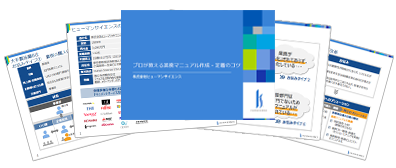


















































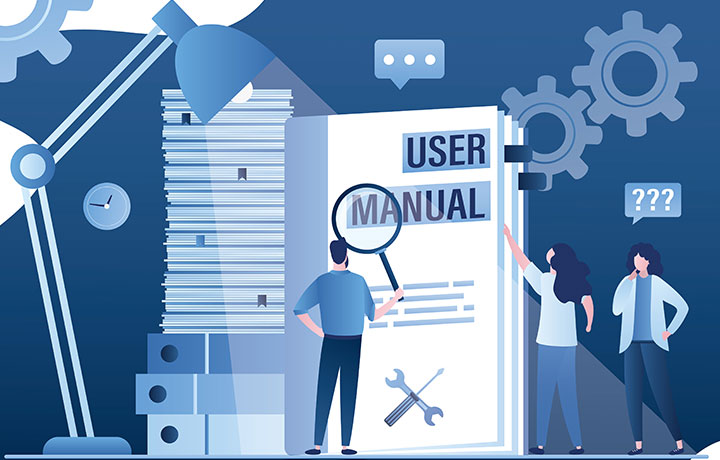









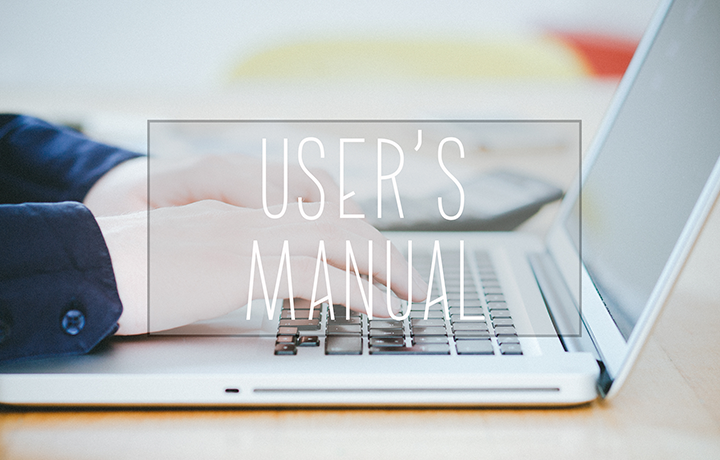











 Manual creation
Manual creation Director, Writer
Director, Writer In-house Support
In-house Support Video
Video Manual
Manual Manual Creation
Manual Creation One-Stop Service for Manual Creation
One-Stop Service for Manual Creation Manuals and Documents
Manuals and Documents